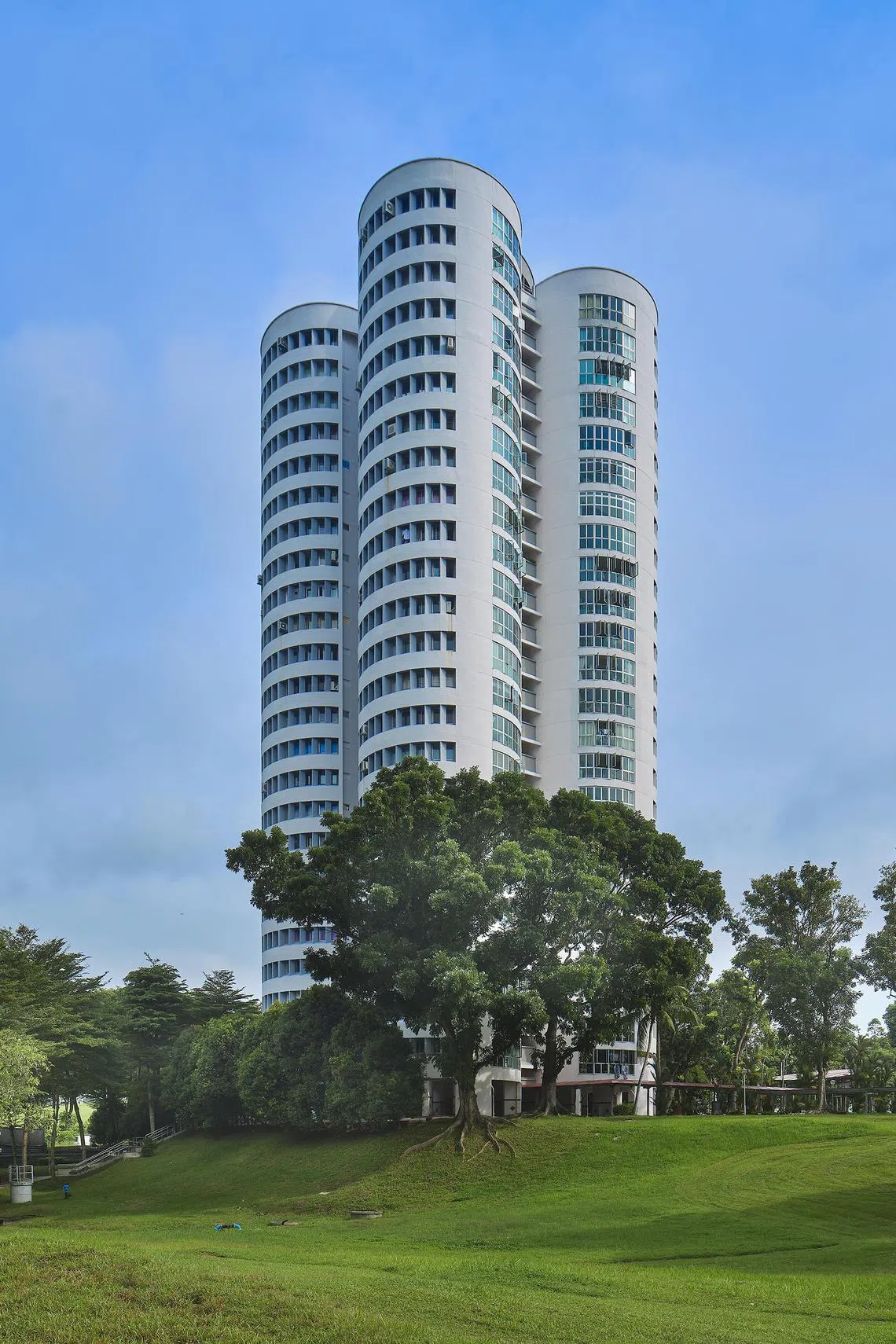Songbirds, iconic HDB blocks and more: Rediscovering Ang Mo Kio with refreshed heritage trail
Sign up now: Get ST's newsletters delivered to your inbox
Follow topic:
SINGAPORE – Every morning for the last 30 years, retired shipping executive Chin Hin Fatt has taken three or four of his zebra doves – named for their distinct stripes – to the Kebun Baru Birdsinging Club, so his pet birds can sing with their feathered friends.
At the same time, the Hougang resident catches up with a few of the 30 fellow bird enthusiasts there, over coffee and bird-watching.
Mr Chin, who has close to 40 birds – all zebra doves – in his landed home, said he does not give them names.
“I identify them by their different cages,” the 72-year-old told The Straits Times. “Occasionally, I enter some in bird-singing competitions here, but I don’t want to stress them too much either.”
Kebun Baru Birdsinging Club, located at the foot of Ang Mo Kio Town Garden West, is Singapore’s largest bird-singing and display arena.
The club’s co-founder Robin Chua, a grassroots volunteer, said birdkeepers started gathering there in the 1970s, hanging their caged birds on trees.
In 1987, poles were erected to attract more bird owners. Today, the venue can accommodate more than 1,000 cages.
Mr Chua, a retired engineer in his 70s, said: “We attract bird hobbyists from all over Singapore. This is really the place where the birds encourage each other to sing, and train for singing competitions held here.”
Besides zebra doves, which have a brownish-grey body and are known for their staccato cooing calls, visitors can also spot the long-tailed shama, red-whiskered bulbul and an array of other birds.
The club is featured in the National Heritage Board’s (NHB) Ang Mo Kio Heritage Trail, launched in 2011 and now refreshed to include new stories of the town’s history and heritage.

The Kebun Baru Birdsinging Club is Singapore’s largest bird-singing and display arena.
ST PHOTO: SHINTARO TAY
The trail covers 40 heritage sites and features 10 heritage markers. These include 13 new sites, as well as two new markers at the Church of Christ the King – the only Catholic church in Ang Mo Kio – and Liuxun Sanhemiao, a joint temple formed by three temples – Sam Ann Fu, Longxuyan Jinshuiguan and Hong San Chin Huat Temple Association.
The trail also features three self-guided routes exploring different aspects of Ang Mo Kio’s heritage – Iconic Landmarks, Hidden Heartland Gems and Scenic Fringes.

The Church of Christ the King is the only Catholic church in Ang Mo Kio.
ST PHOTO: SHINTARO TAY
When it was completed in the late 1970s, Ang Mo Kio Town Centre was one of the largest town centres in Singapore.
In the late 1980s and 1990s, visiting dignitaries to Singapore were often given a tour of Ang Mo Kio as a showcase of Singapore’s public housing achievements. Block 710 at the town centre, known then as the VIP Block, offered dignitaries such as Britain’s late Queen Elizabeth II and former Chinese premier Li Peng panoramic views of Ang Mo Kio New Town.

The VIP Block offered dignitaries panoramic views of Ang Mo Kio New Town.
ST PHOTO: SHINTARO TAY
There are also lesser-known stories of the town, such as the hidden cache of artworks by the late Chinese artist Xu Beihong, which used to be located in Chong Boon Chinese School in Lelong Pah, which is near today’s Serangoon Gardens.
When Japan invaded Malaya in 1941, Xu, who was renowned for his ink paintings of horses and birds, had just organised an exhibition to raise funds to support the anti-Japanese effort in the Sino-Japanese war. To evade surveillance, Xu’s associates arranged for him to take shelter at Lelong Pah. His collection of art tools and artworks were carefully sealed in ceramic vats and buried near the school.
After the occupation, these vats were retrieved and left to air-dry for over two months in the school before being returned to Xu.
Ang Mo Kio has other bragging rights, including Ang Mo Kio Town Council, the first such town council in Singapore, established in 1986.

Dubbed the Clover Block after its resemblance to the plant, Block 259 at Ang Mo Kio Avenue 2 is a beloved icon of Ang Mo Kio today.
PHOTO: NATIONAL HERITAGE BOARD
There is also the iconic Block 259, known as the Clover Block for its resemblance to the plant. It is the only block of circular Housing Board flats.
The Ang Mo Kio Heritage Trail’s companion guide and map in four official languages can be downloaded from NHB’s heritage portal, Roots.gov.sg

